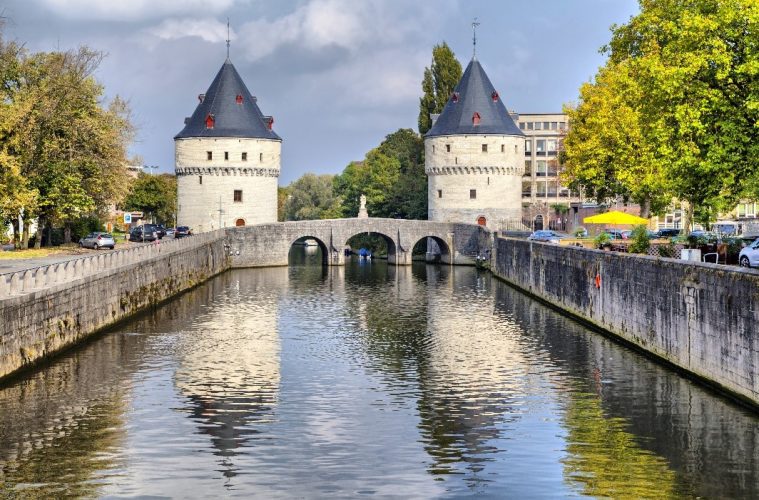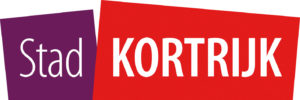Now for something completely different….
Like everyone, the lockdown for coronavirus has driven me crazy. As soon as legally possible, I snuck away from work and rode the route of the first Tour de Flanders. Below is a little something I wrote about the experience, and here are some pictures. And if you’d like to see the route I took, you’ll find it here.

Recycling the 1913 Tour de Flanders
What went through Paul Deman’s mind as he waited for his execution? Did he remember the thrill of winning the first-ever Tour de Flanders? Did he worry about the family he was leaving behind? Or did he curse his 14th and final secret mission to The Netherlands before he fell into German hands?
I like to think that Deman remembered towering clouds in a baby blue sky, hung above the green fields of Flanders that he loved to ride.
Thoughts while cycling come as frequently as pedal rotations, and as randomly as the air curling past. My thoughts rolled through Flemish history this June as I retraced much of Deman’s route in the 1913 race. Flanders, Belgium’s Dutch speaking region, has been both the battlefield and business capital of Europe. Now, it is a wealthy and economically vibrant region.
One day after Belgium eased coronavirus quarantine, I cycled from my home outside Brussels to join the original route near Zottegem. Deman and others took just over 12 hours to ride the 324 kilometers, or nearly 200 miles, round trip from Ghent. With a slightly varied route, I took six days. Flanders has thousands of kilometers of cycle paths, and I used an app called Komoot to map and guide me.
The Tour de Flanders began as a way to sell newspapers while capitalizing on a 1912 Belgian victory in the more famous Tour de France. Rarely the same route, the Tour de Flanders now runs roughly 250 km, often over cobbled hills. But that first race covered a largely flat course. Thirty-seven riders left Ghent May 25, 1913 at 6:15 a.m.
Roughly 107 years later, on a day of low-hanging clouds, I reached the Scheldt River and headed south to Oudenaarde, end point of the race since 2012. Paved paths line the historic border waterway– to the west was once France, to the east had been the Holy Roman Empire – and led straight into town. There, the UNESCO-designated Town Hall dominated the main square, not far from the Tour de Flanders museum and its modern displays.
I rode a touring bike with 27 gears which, with my bag of clothes and gear, probably weighed 50-60 pounds. The fixed-gear cycles of 1913 weighed almost that much alone, and yet Deman averaged almost 27 km/hour.
The next morning on the Scheldt heading to Ypres was sublime. Greens of all hues unfurled among the fields and foliage into the low rising hills, and a rising sun cast long shadows across the river.

The route passed by Rekkem, a French border village where Paul Deman was born. Despite quarantine’s easing, the border here between Belgium and France was closed – lightweight fencing abruptly closed roads, like photos from early East-West division in Berlin.
I arrived at Ypres’ Hotel Ambrosia to a very happy manager. I was his first customer in three months, and the only guest that night. That evening, I attended the Last Post at Menin Gate, a solemn tribute to the 90,000 Commonwealth dead – who themselves were part of about 300,000 soldiers who died in this region. Normally attended by hundreds of visitors, the moving ceremony has been performed each night at 8 p.m. since 1928 (with a pause during WWII). With the coronavirus’ chill, only about 40 people attended the evening I was there.
Returning to the hotel, I passed the Biking Box bar and popped in. I found owner Kurt Titeca engaged in rapid Flemish conversation with two patrons – both longtime friends. As an American and a tourist, I was immediately invited into the conversation with questions about US politics, the virus’ impacts and, of course, why I was traveling. My plan to recreate the 1913 Tour de Flanders sparked great joy. Kurt, who also runs area bicycle tours, offered to escort me out of town the next morning so that he could get in a ride of his own. Offer accepted.
It was cold and drizzly the next morning – the type of day I would never have ridden before moving from South Carolina to Belgium in 2016. But I’d learned that Belgians – especially Flemish – don’t change their plans because of weather; they change their clothes. So, I was ready when Kurt arrived, accompanied by his 17-year-old daughter Yasmira, both on sleek racing bikes.
They sped away, bouncing off cobbled streets and expertly fielding corners as I worked to catch them. We hit the Ieperlee, a canalized river that flows into the Yser, and turned east. We moved quickly along curving paved paths that had once divided armies – to the right, the smooth water and then farmland where Germans had hidden; to the left bushes, trees and the occasional house on the Allied side. The rain let up about the time Kurt slowed. “I want to show you something,” he said. We walked toward a small graveyard, and he turned toward a bunker. We were at the Essex Farm Cemetery and the bunker was the claustrophobic dressing station where Canadian physician John McCrae wrote “In Flanders Fields”, shortly after burying a friend.
Following a brief ride, we arrived at another bunker. Peering through barred windows, I could see a small door with a pointed arch and Arabic letters. A nearby plaque said this bunker housed WWI soldiers from French North Africa. Kurt and Yasmira turned back to Ypres, and I headed east to the coast.
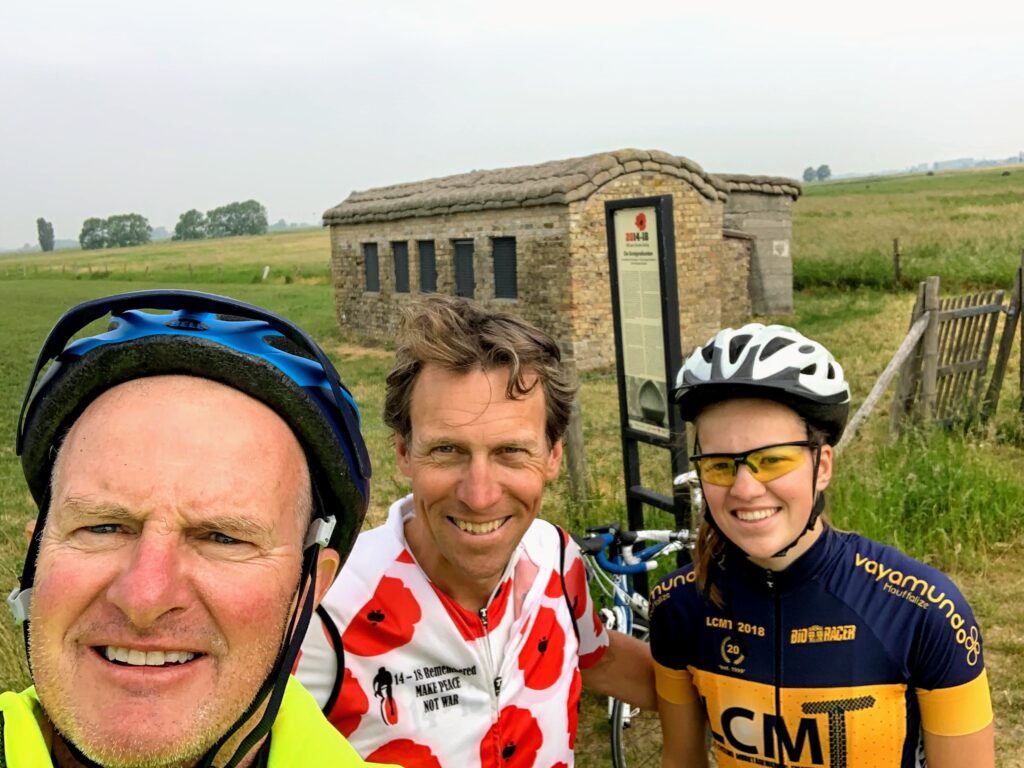
The land spread out flat before me and the air soon began to have the fresh feel of the ocean. The route rolled by fields, villages, and lonely train tracks. I took a slight detour to De Panne on the Atlantic. The oceanfront was dominated by ugly buildings and an enormous statue of a man framed by a concrete rectangle, his back to the ocean and looking inland. Here, in 1831, Leopold I of Germany arrived to become king of the newly created nation of Belgium. Later that century, his son Leopold II would cruelly rule the Congo. And now, as I rode through the region, protests echoing Black Lives Matter were leading to the removal of the son’s statues.
Back on the Tour route, a 20 mph wind defended Nieuwport’s entrance, where I spent the night. A cycling friend advised me to leave the coast and instead go inland. “Follow the water,” he said. So, the next morning I rode past the canal locks hand-cranked open on Oct. 29, 1914 by Belgians so desperate to stop the WWI German advance that they flooded a portion of their own country. The canals led to striking vistas of vivid, wind-stirred green fields, cirrus-traced skies, slow-flowing water, old men canal-fishing and bumpy dirt paths. It continued that way until I hit the highways leading into Ostend. While there, I found the former home of Marvin Gaye, who wrote “Sexual Healing,” during the 18 months he lived in Ostend from February 1981.
The 1913 Tour took a sharp cut southeast from Ostend to Roeselare then back north to Bruges. I cut the corner and went directly to Bruges riding along a canal built in the 1600s to link the economies and armies of Ghent and Bruges to the Atlantic. Winding smoothly under a protective tunnel of trees, the path guided groups of colorfully clad sports cyclists, elderly couples and children on training wheels. One study found that at least half of Belgians cycle, but that seemed low to me, especially given public transport’s decline in the coronavirus era.
But while Belgians may have been out and about, tourists were not. In Bruges, which normally receives about 70 times more annual visitors than its roughly 120,000 residents, the lanes, parks and canals were nearly empty. Few restaurants were open, and natives – not tourists – gathered to dine and drink local beer in the lengthy, pre-solstice sunsets.
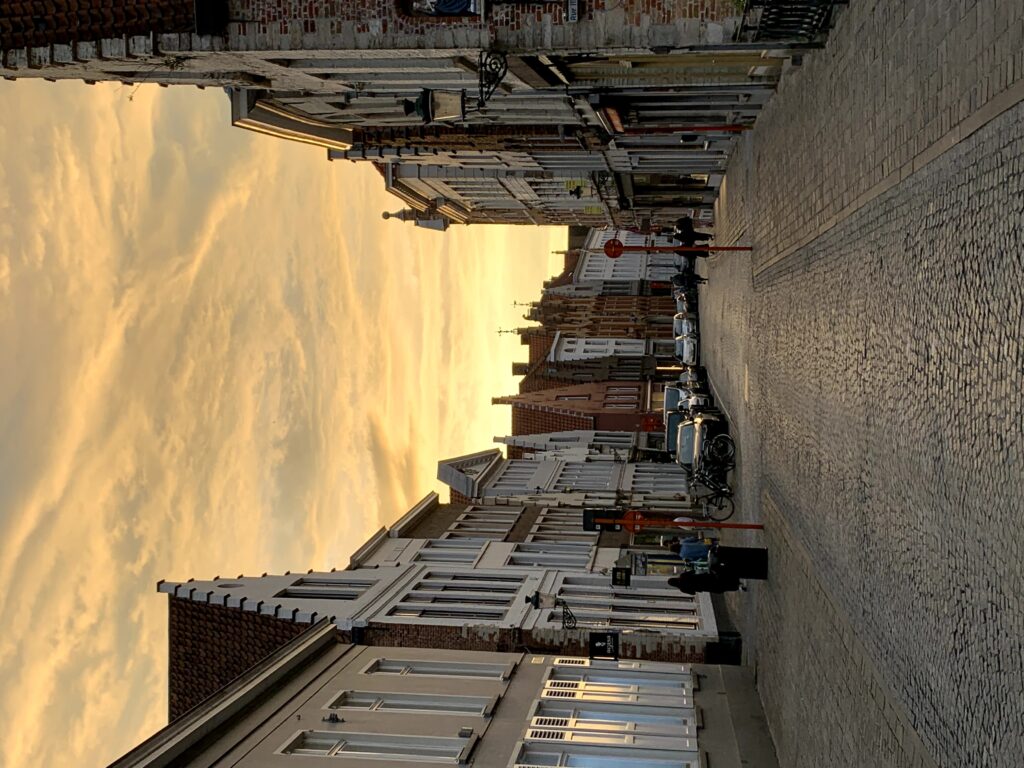
At this point in 1913, Deman and his five main competitors had fewer than 50 kms to get back to Ghent. As for me, I would keep going past Ghent to Sint-Niklaas and Aalst, before connecting with Zottegem again and heading home.
The Ghent velodrome was long ago demolished, but what a finish it must have witnessed when the Tour arrived that evening. As the six main riders entered, two collided and fell, and Deman fought off the others to enter cycling history.
Soon after, British Intelligence asked Deman to cycle secret documents more than 100 kms each way across German territory and into The Netherlands. He did so repeatedly, but in September 1918 was caught.
Awaiting a firing squad, Deman was beaten and interrogated but once again beat the course. Before the Germans could act, the Armistice was signed, and American soldiers freed Deman. He later won the 1920 Paris-Roubaix and 1923 Paris-Tours cycling events, and was awarded heroism medals by the British, French and Belgians. Deman lived in Belgium until his death in 1961, aged 72, at his home fewer than 20 kms from Oudenaarde, where the Tour ends today.

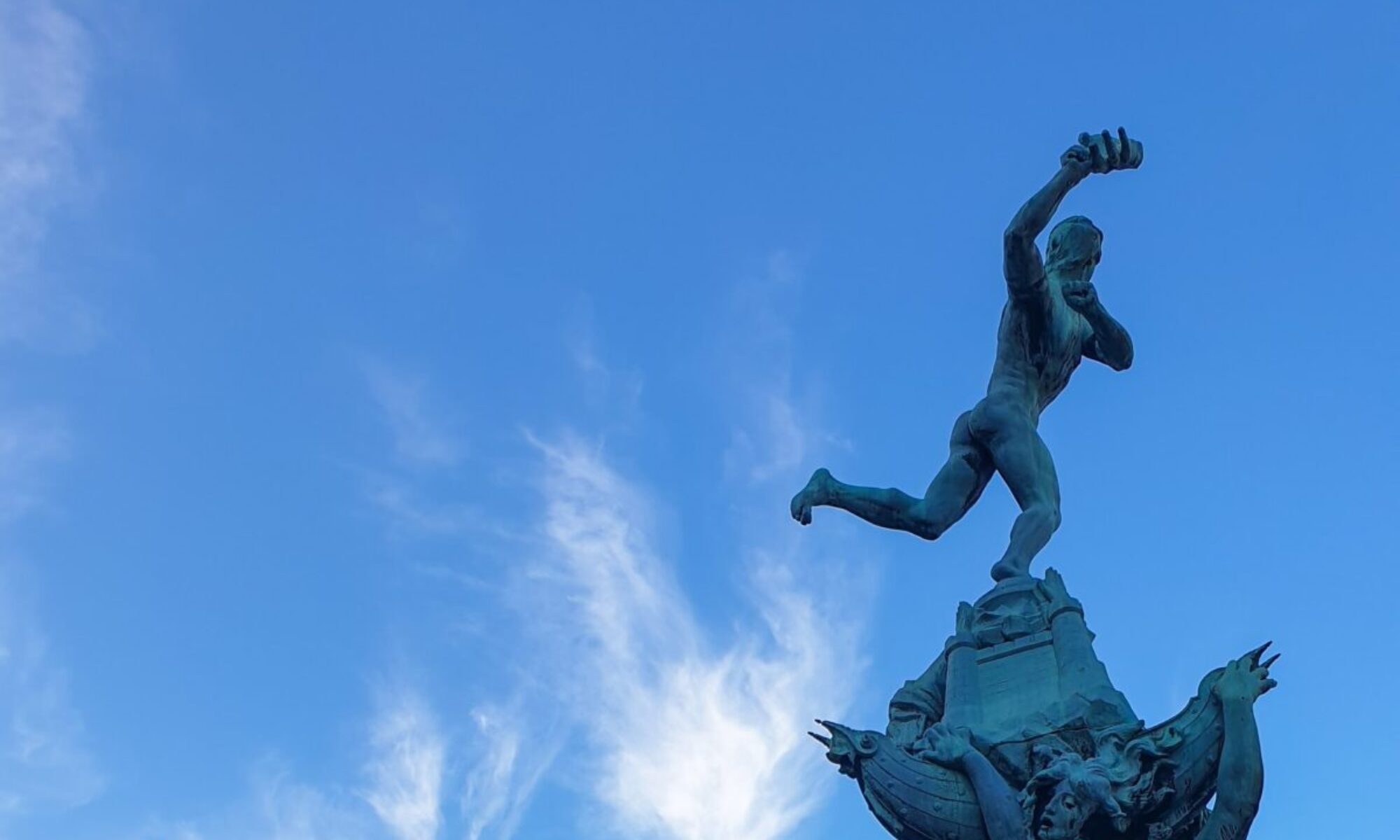




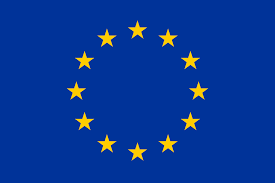
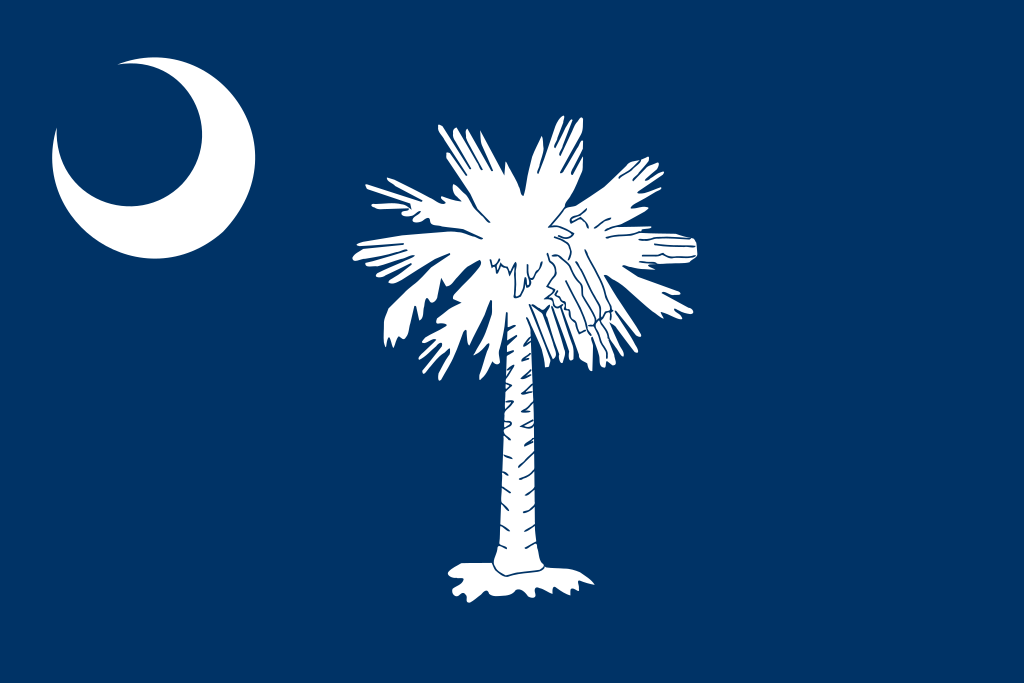
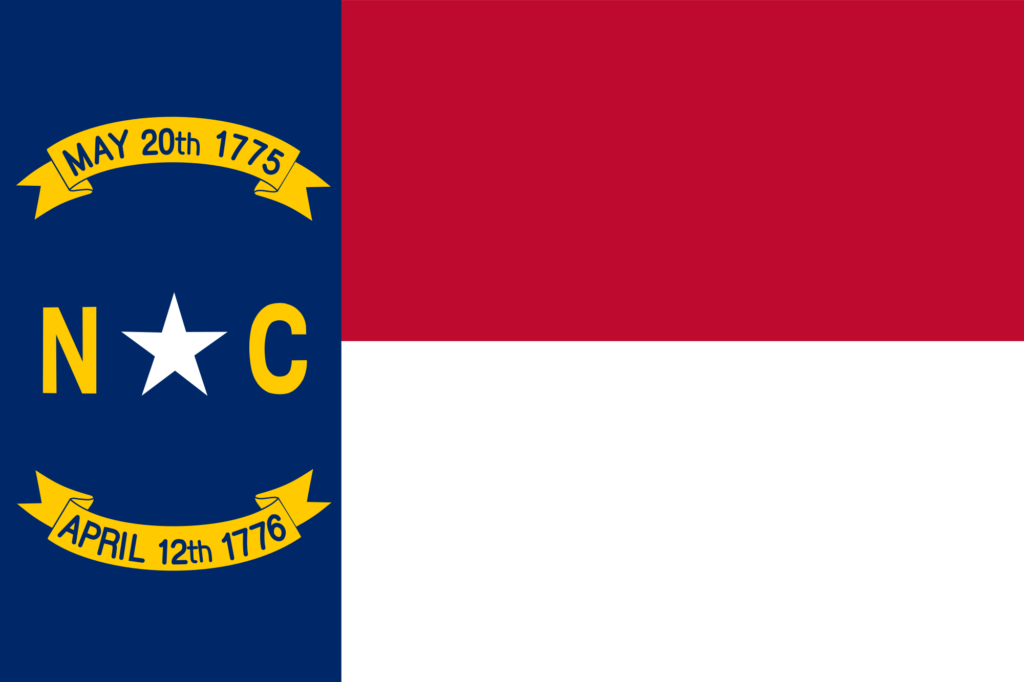

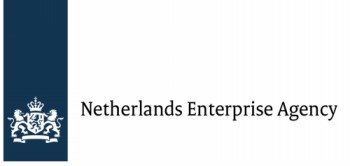


 The Kortrijk Biennale Interieur celebrated 50 years in October of its internationally acclaimed design festival. The week-long exhibition has enabled the West Flanders city to move from a dying textile capital to a vibrant creative center.
The Kortrijk Biennale Interieur celebrated 50 years in October of its internationally acclaimed design festival. The week-long exhibition has enabled the West Flanders city to move from a dying textile capital to a vibrant creative center.